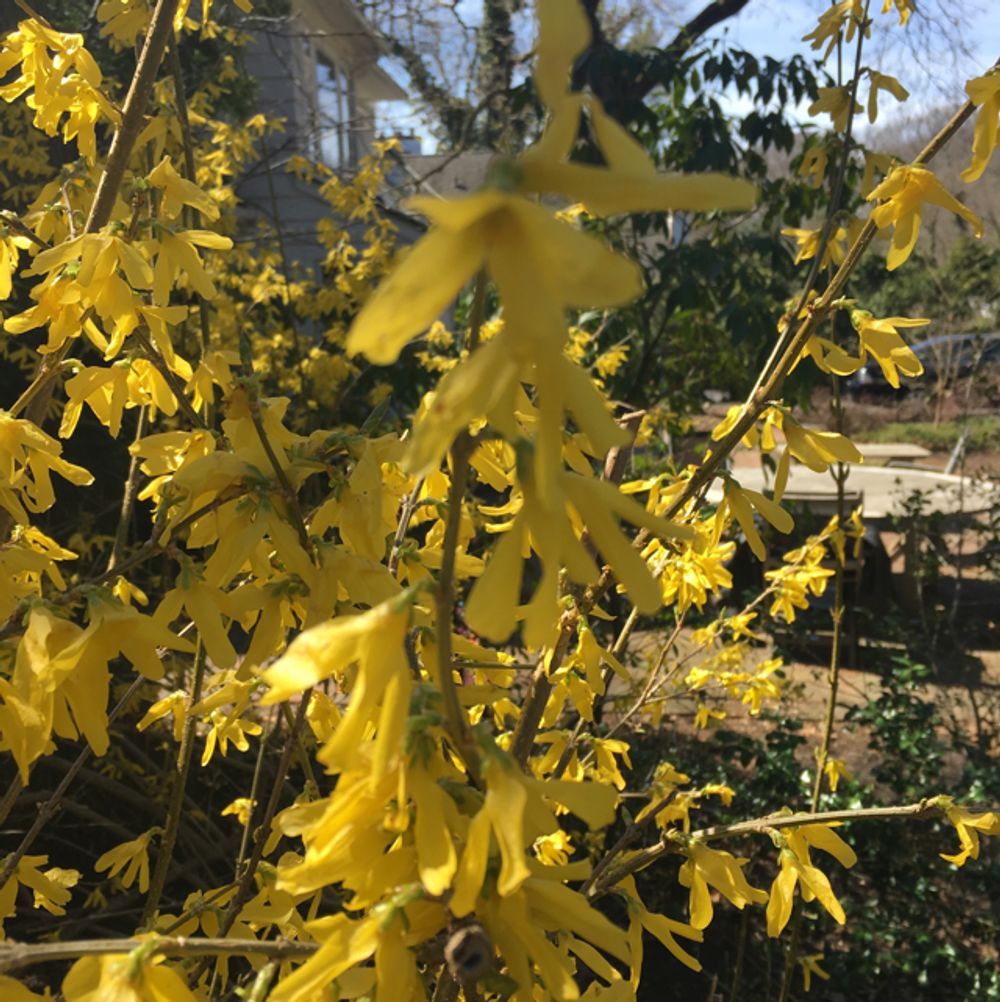Forsythia
(Forsythia)

Description
Forsythia are deciduous shrubs typically growing to a height of 1-3 m (3 ft 3 in-9 ft 10 in) and, rarely, up to 6 m (20 ft) with rough grey-brown bark. The leaves are borne oppositely and are usually simple, though sometimes trifoliate with a basal pair of small leaflets; they range between 2 and 10 cm (0.79 and 3.94 in) in length and, rarely, up to 15 cm (5.9 in), with a margin that is serrated or entire (smooth). The flowers are produced in the early spring before the leaves, bright yellow with a deeply four-lobed flower, the petals joined only at the base. These become pendent in rainy weather thus shielding the reproductive parts. The fruit is a dry capsule, containing several winged seeds. It is widely stated that forsythia flowers are able to produce lactose (the milk sugar). Lactose is very rarely established in other natural sources except milk. However, the presence of lactose could not be confirmed. The genus is named after William Forsyth (1737-1804), a Scottish botanist who was royal head gardener and a founding member of the Royal Horticultural Society.
Taxonomic tree:







